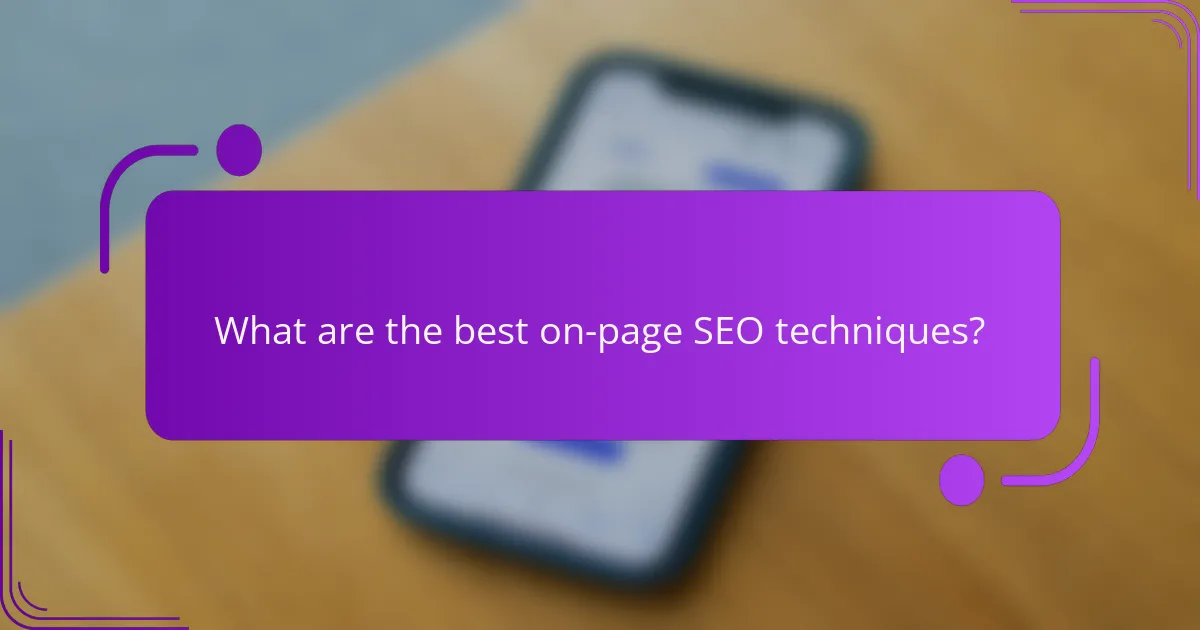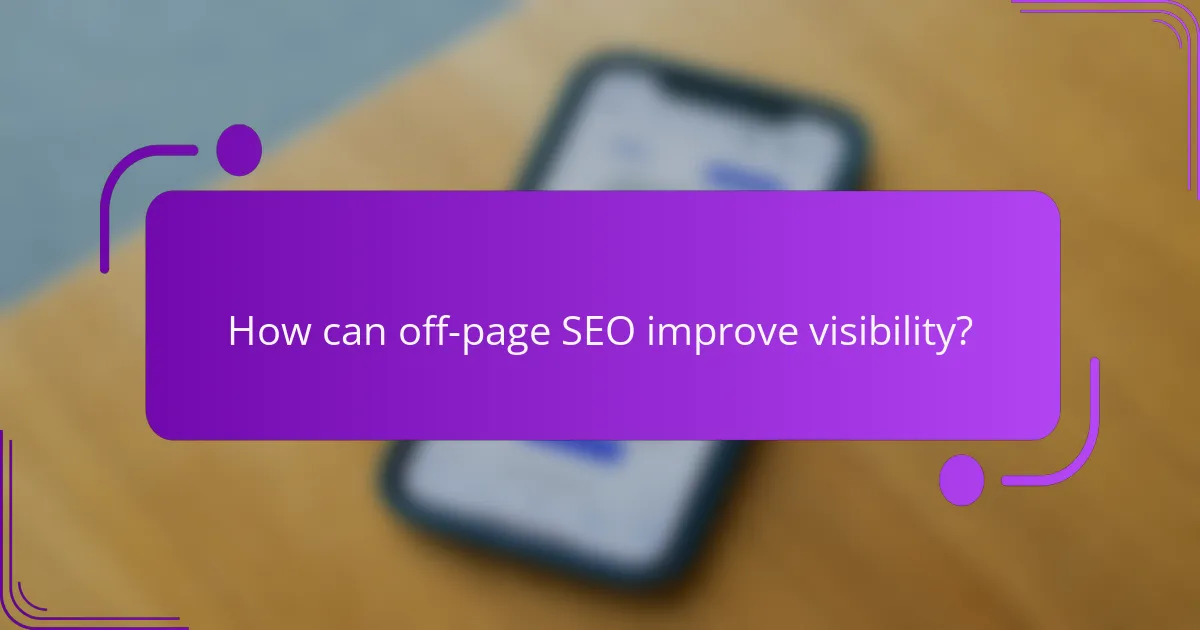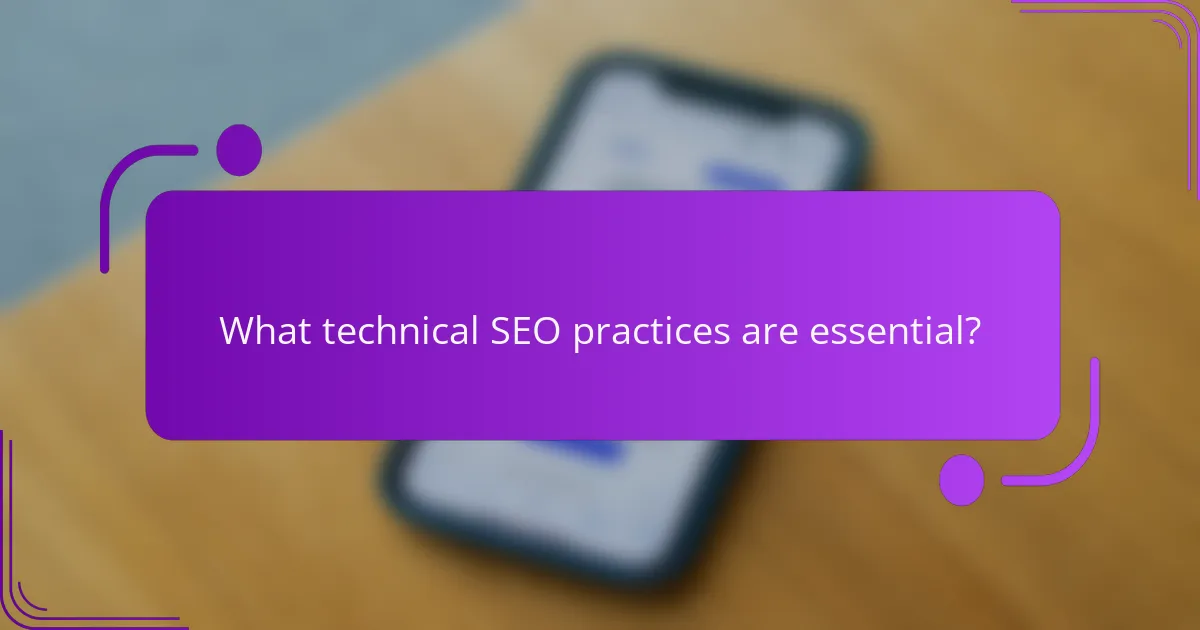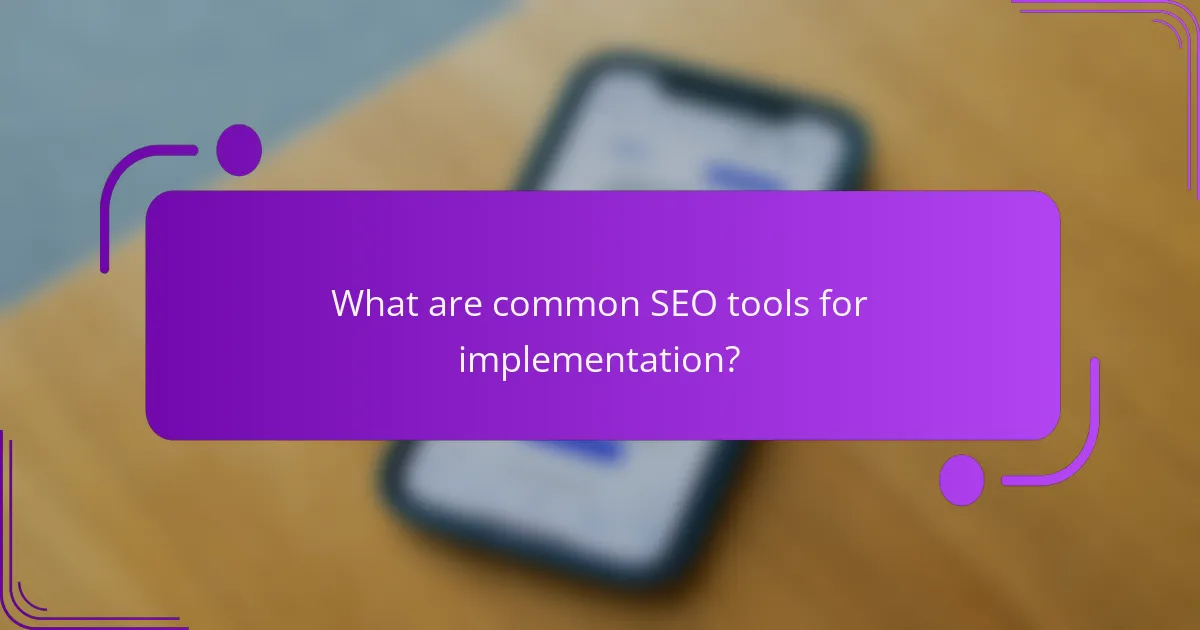Effective SEO techniques are crucial for boosting a website’s visibility and ranking on search engines. These techniques can be categorized into three main areas: on-page SEO, which focuses on optimizing individual web pages for relevance and user experience; off-page SEO, which builds authority and reputation through external factors; and technical SEO, which enhances a website’s infrastructure for better performance and search engine visibility.

What are the best on-page SEO techniques?
On-page SEO techniques are essential for improving a website’s visibility and ranking on search engines. They involve optimizing individual web pages to enhance their relevance and user experience, which can lead to higher organic traffic.
Keyword optimization
Keyword optimization is the practice of researching, analyzing, and selecting the best keywords to target in your content. Focus on using relevant keywords naturally within your text, headings, and URLs to improve search engine rankings. Aim for a mix of short-tail and long-tail keywords to capture a broader audience.
Tools like Google Keyword Planner or SEMrush can help identify effective keywords. Avoid keyword stuffing, which can harm your ranking; instead, maintain a keyword density of around 1-2% for optimal results.
Meta tags and descriptions
Meta tags, including title tags and meta descriptions, provide essential information to search engines and users about your webpage. A compelling title tag should be around 50-60 characters, while meta descriptions should be between 150-160 characters to ensure they display correctly in search results.
Include primary keywords in both tags to enhance relevance. Craft engaging descriptions that encourage clicks, as higher click-through rates can positively impact your rankings.
Content quality and relevance
High-quality, relevant content is crucial for on-page SEO. Ensure your content is informative, well-structured, and addresses the needs of your target audience. Aim for a minimum of 300 words per page, but longer, in-depth articles often perform better in search rankings.
Regularly update your content to keep it fresh and relevant. Use headings, bullet points, and images to improve readability and engagement, which can reduce bounce rates and enhance user experience.
Internal linking strategies
Internal linking involves linking to other pages within your website, which helps search engines understand your site’s structure and hierarchy. Use descriptive anchor text for your links to provide context and improve navigation for users.
Link to related content to keep visitors engaged and encourage them to explore more of your site. A good practice is to have at least 2-3 internal links per page, but ensure they are relevant and enhance the user experience.
Image optimization
Image optimization is essential for improving page load speed and enhancing user experience. Use appropriate file formats like JPEG for photos and PNG for graphics, and compress images to reduce their size without sacrificing quality.
Include descriptive alt text for each image to improve accessibility and help search engines understand the content. Aim for a file size of under 100 KB per image to ensure fast loading times, which can positively affect your SEO performance.

How can off-page SEO improve visibility?
Off-page SEO enhances a website’s visibility by building its authority and reputation through external factors. This includes strategies like backlink building, social media engagement, influencer partnerships, and managing online reputation, all of which contribute to higher search engine rankings.
Backlink building
Backlink building involves acquiring links from other websites to your own, signaling to search engines that your content is credible and valuable. Focus on obtaining links from reputable sites within your industry, as these carry more weight. Aim for a diverse backlink profile, including guest posts, directory submissions, and partnerships.
Consider using tools like Ahrefs or Moz to analyze your backlink profile and identify opportunities. A good rule of thumb is to target sites with a Domain Authority (DA) of 30 or higher for effective link-building efforts.
Social media engagement
Social media engagement boosts off-page SEO by driving traffic and increasing brand awareness. Regularly share high-quality content on platforms like Facebook, Twitter, and Instagram to engage your audience and encourage shares. The more your content is shared, the more visibility it gains, which can lead to natural backlinks.
Focus on creating shareable content, such as infographics or videos, that resonates with your target audience. Engage actively with followers to foster a community and encourage discussions around your brand.
Influencer partnerships
Influencer partnerships can significantly enhance your off-page SEO by leveraging the audience of established figures in your niche. Collaborate with influencers who align with your brand values to promote your products or services, which can lead to increased traffic and backlinks.
When selecting influencers, consider their engagement rates and audience demographics. Micro-influencers often have higher engagement and can be more cost-effective, making them a good choice for targeted campaigns.
Online reputation management
Online reputation management is crucial for maintaining a positive brand image, which in turn supports off-page SEO efforts. Monitor reviews and mentions of your brand across platforms like Google, Yelp, and social media to address any negative feedback promptly.
Encourage satisfied customers to leave positive reviews, as these can enhance your credibility and influence potential customers. Use tools like Google Alerts to track your brand mentions and respond proactively to any issues that arise.

What technical SEO practices are essential?
Essential technical SEO practices focus on optimizing your website’s infrastructure to enhance its performance and visibility in search engines. Key areas include site speed, mobile-friendliness, XML sitemaps, and structured data implementation.
Site speed optimization
Site speed optimization is crucial as it directly impacts user experience and search rankings. Aim for a loading time of under three seconds; faster sites tend to retain visitors better and rank higher.
To improve site speed, consider compressing images, leveraging browser caching, and minimizing JavaScript. Tools like Google PageSpeed Insights can help identify specific areas for improvement.
Mobile-friendliness
Mobile-friendliness ensures that your website is accessible and functional on mobile devices. With a significant portion of web traffic coming from smartphones, a responsive design is essential for user engagement and SEO.
Use Google’s Mobile-Friendly Test to check your site’s compatibility. Prioritize a layout that adapts to different screen sizes and ensure that buttons and links are easily clickable on smaller displays.
XML sitemaps
XML sitemaps are files that list your website’s pages, helping search engines crawl and index your content more effectively. Creating and submitting an XML sitemap can improve your site’s visibility in search results.
Ensure your sitemap is updated regularly, especially after adding new content. Use tools like Yoast SEO for WordPress to generate and manage your sitemap easily.
Structured data implementation
Structured data implementation involves adding specific code to your website that helps search engines understand your content better. This can enhance your search listings with rich snippets, potentially increasing click-through rates.
Utilize schema markup to define elements like products, reviews, and events. Google’s Structured Data Testing Tool can help you validate your markup and ensure it is correctly implemented.

How to choose the right SEO techniques for your business?
Selecting the right SEO techniques involves aligning your strategies with your business goals, understanding your target audience, and assessing your competition. By focusing on these areas, you can effectively enhance your online presence and drive relevant traffic to your site.
Assessing business goals
Begin by clearly defining your business objectives, whether they are increasing sales, generating leads, or building brand awareness. Each goal may require different SEO techniques; for example, e-commerce sites may prioritize product page optimization, while service-based businesses might focus on local SEO.
Consider using the SMART criteria—Specific, Measurable, Achievable, Relevant, and Time-bound—to evaluate your goals. This approach helps ensure that your SEO efforts are targeted and effective.
Understanding target audience
Identifying your target audience is crucial for selecting appropriate SEO techniques. Conduct market research to understand their demographics, preferences, and online behavior. Tools like Google Analytics and social media insights can provide valuable data.
Once you know your audience, tailor your content and keywords to meet their needs. For instance, if your audience is primarily young professionals, focus on platforms and content styles that resonate with them, such as mobile-friendly websites and engaging blog posts.
Evaluating competition
Analyzing your competitors can reveal effective SEO techniques they are using. Identify key players in your industry and assess their website performance, keyword strategies, and backlink profiles. Tools like SEMrush or Ahrefs can help you gather this information.
Look for gaps in their strategies that you can exploit. For example, if competitors lack local SEO optimization, you can focus on enhancing your presence in local search results to attract nearby customers.

What are common SEO tools for implementation?
Common SEO tools are essential for effectively implementing SEO strategies. They help analyze website performance, track metrics, and optimize content for better search engine rankings.
Google Analytics
Google Analytics is a powerful tool that tracks and reports website traffic. It provides insights into user behavior, allowing you to understand how visitors interact with your site and which pages perform best.
To get started, set up an account and integrate the tracking code into your website. Focus on key metrics such as bounce rate, session duration, and conversion rates to gauge effectiveness. Regularly review your data to identify trends and areas for improvement.
SEMrush
SEMrush is a comprehensive SEO tool that offers features for keyword research, site audits, and competitor analysis. It helps you identify high-value keywords and assess your site’s health, ensuring you stay competitive in your niche.
Utilize SEMrush to conduct a site audit, which can reveal technical issues that may hinder your SEO efforts. The keyword research tool can help you discover new opportunities, while the competitor analysis feature allows you to benchmark against industry leaders. Regularly update your strategies based on the insights gathered from SEMrush to enhance your online visibility.
